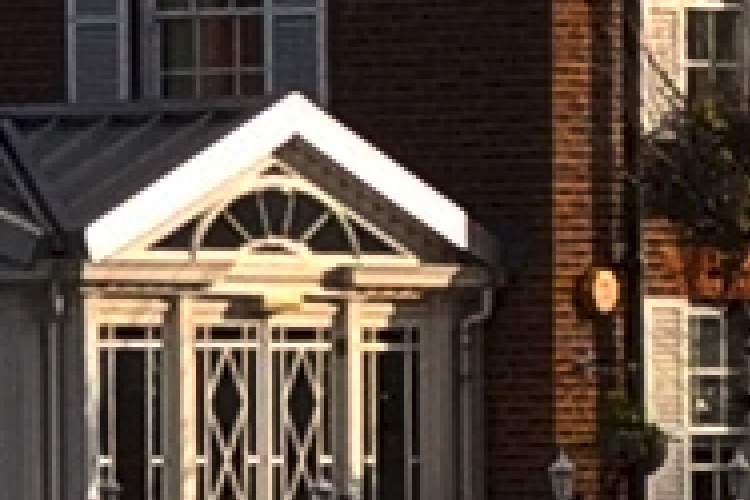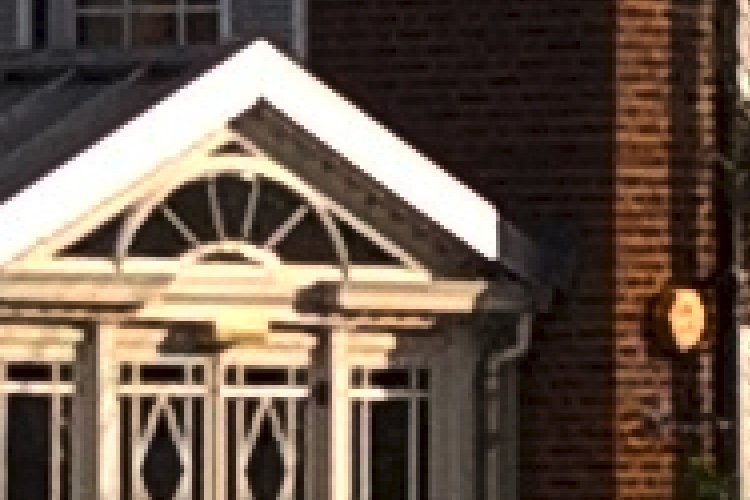The PureView system, debuting with the Nokia 808 and Lumia 1020, involved 34MP photos (in 16:9) being oversampled at capture time down to 5MP, resulting in 'purer', less noisy images that took up less (precious) storage space because of the lack of artefacts. For the Lumia 930 and 1520, and then for the Lumia 950 and 950 XL, the size of the sensor and optics were reduced to keep the overall phone thickness down, but we're still dealing with a 16MP image (again, in 16:9 mode) being, optionally this time, oversampled down to 5MP (for the 930 and 1520) and 8MP (for the 950 models). The system still works well and though the degree of oversampling isn't as high as on the 808 and 1020, the improvements in sensor technology almost make up for this, while allowing a more competitive form factor.
I say 'optionally' above because Camera in Windows 10 Mobile - and indeed Lumia Camera generally these days - offers a choice of capture resolutions. Oversampled, or 'full' resolution (for the current aspect ratio), or oversampled plus RAW (actually .DNG files). But which should you choose?
Here are the pros and cons of the PureView system as at 2016 (at least), in typical Steve/AAWP form(!):
| Mode | Advantages | Disadvantages |
| 'Oversampled' (e.g. 8MP) |
|
|
| 'Full resolution' (e.g. 16MP) |
|
|
| 'Oversampled plus RAW' (e.g. 8MP plus 16MP .DNG) |
|
|
The file size differences are particularly notable, especially after the phone has been used for a few months and your stock of captured (local) photos has built-up. Admittedly with a meaty microSD card you might be able to afford to not worry about this, but file sizes have a knock on effect these days into online costs, with the extra bandwidth of backing up the larger files and the potential extra cost of storing them on OneDrive via the automatic backup. Just something to be aware of!
Of particular interest to me was what was lost or gained in terms of image detail in fiddling with resolution and capture modes. I wanted to test this, so I picked a detailed subject in a sunny landscape and shot it three times, in each of the modes listed in the table above.
Here's the full scene, for context:

And, in the same order as in the table, here are pixel-quadrupled crops, i.e. I've deliberately gone to 1:1 and then magnified the pixels by a factor of four, so that the differences are easier to visualise. Don't get too hung up over the pixellated nature, what you need to appreciate is the actual detail, i.e. the information in each image fragment.
Firstly, from the 8MP oversampled photo, then the 16MP version (showing smaller field of view, as you'd expect), then a representation of the RAW photo, rendered on a Mac, cropped and then back-encoded to JPG:



Very interesting indeed. Leaving aside that the RAW/.DNG version has vastly better potential for messing around with on a powerful computer later, let's look at the actual information in each image. Your eyes will tell you that the crops get better through the batch of three and that the last one is superior - it's certainly 'smoother' - but I contend that, wherever you look in the image, no extra detail or information is present.
For example, look at the yellow object on the right of the crops. It's presumably an alarm of some kind. But stare at its representation in the pixels of each crop and it should dawn on you that even though the 16MP images (JPG and RAW) look 'smoother', there's precisely zero extra detail, i.e. you can't make out anything extra on the object. Ditto for anything else in the frame, perhaps a window detail or texture on the stonework - the 8MP oversampled version contains just as much information (ultimately making its way through to your eyes) as the other two photos, despite being at a loss in terms of the number of pixels.
This shouldn't actually be surprising - after all, the whole point of oversampling is to reduce noise and pixel uncertainty to produce purer, clearer pixels. And, right down at the pixel level on the sensor, however good the technology, there's some uncertainty (thanks to the R-G-B layout and Bayer filtering), so you don't really gain any extra visible detail by trying to look at, say, an individual green-lensed pixel. As the old cliché goes, you have to look at the 'big picture' - you can take pixel peeping too far!
_____
My conclusion then is that on the likes of the Lumia 930, 1520, 950 and 950 XL, it's best to stick to '8MP' (oversampled) as your default setting in Windows 10 Mobile Camera (and in Lumia Camera on older OS versions) - enjoy the much smaller file sizes, eating up less space on the phone and in the Cloud, and enjoy the 2x lossless zoom and the faster processing on the phone as the icing on the cake.
The other modes have their places - 16MP when you want to snap a scene and know that you're only going to use part of it later (e.g. a sports scenario), and RAW when you're doing something very arty and need to be able to play around on the desktop later, and never mind the file sizes.
Oversampling for the win then. Who knew?(!)
